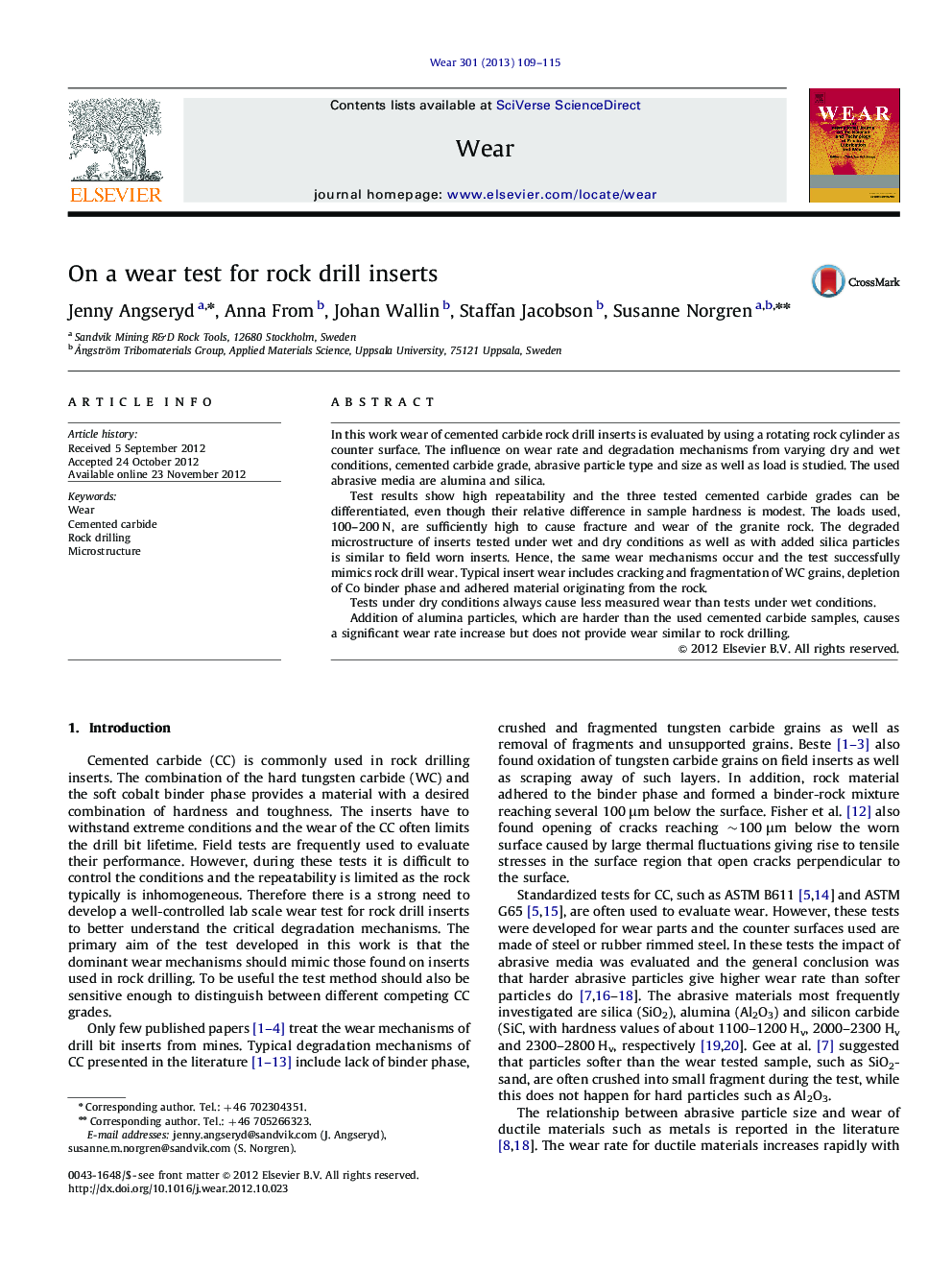| Article ID | Journal | Published Year | Pages | File Type |
|---|---|---|---|---|
| 617509 | Wear | 2013 | 7 Pages |
In this work wear of cemented carbide rock drill inserts is evaluated by using a rotating rock cylinder as counter surface. The influence on wear rate and degradation mechanisms from varying dry and wet conditions, cemented carbide grade, abrasive particle type and size as well as load is studied. The used abrasive media are alumina and silica.Test results show high repeatability and the three tested cemented carbide grades can be differentiated, even though their relative difference in sample hardness is modest. The loads used, 100–200 N, are sufficiently high to cause fracture and wear of the granite rock. The degraded microstructure of inserts tested under wet and dry conditions as well as with added silica particles is similar to field worn inserts. Hence, the same wear mechanisms occur and the test successfully mimics rock drill wear. Typical insert wear includes cracking and fragmentation of WC grains, depletion of Co binder phase and adhered material originating from the rock.Tests under dry conditions always cause less measured wear than tests under wet conditions.Addition of alumina particles, which are harder than the used cemented carbide samples, causes a significant wear rate increase but does not provide wear similar to rock drilling.
